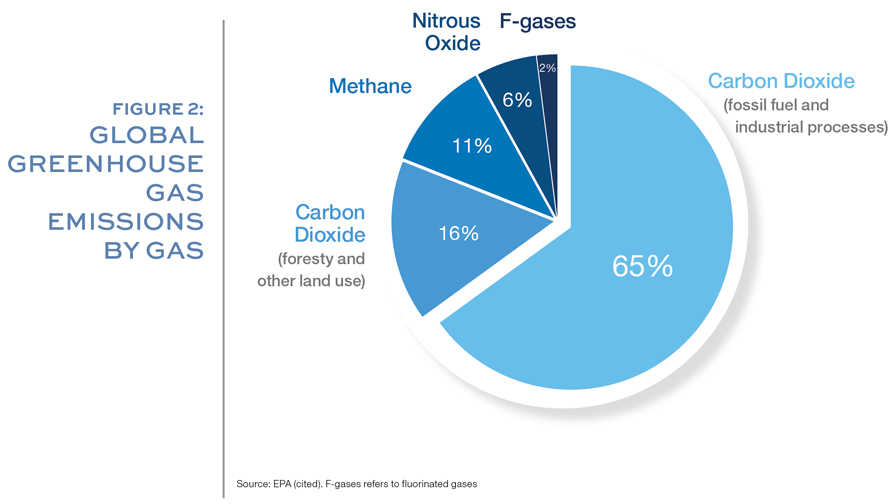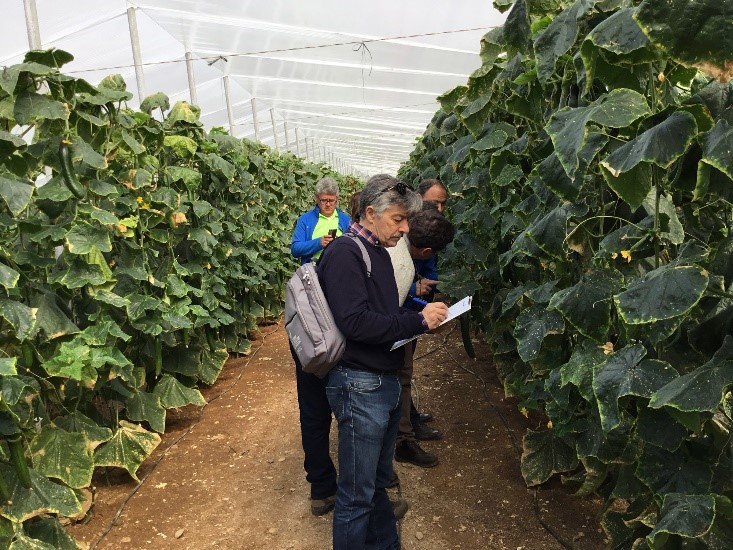How COP26 Methane and Carbon Pledges Will Impact Agriculture
Editor’s note: Kynetec’s analysis is based on data collected from farmer surveys (FarmTrak), distribution surveys (Sigma) and from open-source information. The farmer surveys continue to provide the bulk of the data for our overall analysis. The surveys are also increasingly tracking the development of regenerative agriculture practices across geography and farm types in 50 countries globally. Such data helps organizations measure their Scope 3 emissions and to benchmark that against the industry standard.
Once again, 2021 was a solid year for agriculture.
The industry — as it did in 2020 — has proved its resilience in terms of production of food, fuel, and fiber and at the same time posted positive GDP contribution in the face of a global economic rollercoaster and a pandemic that continues to blight just about everywhere. As an example, for the 2020-21 fiscal year in India, the share of agriculture in GDP reached just over 20% for the first time in the last 17 years — making the sector the sole bright spot in GDP performance that year. In the less agriculturally focused EU27, the agricultural sector contributed an estimated 172 billion Euros towards the EU’s GDP — the equivalent of 1.3% of the total. That contribution did fall ever so slightly as compared to the previous year, but it is still 27% higher than the base index year set in 2010.
Against this backdrop, the UK hosted the 26th UN Climate Change Conference of the Parties (COP26) in Glasgow on 31 October to 13 November 2021. The COP26 summit brought parties together to accelerate action towards the goals of the Paris Agreement and the UN Framework Convention on Climate Change. Held every year now for close to three decades climate change has gone in that time from being a fringe issue to a global priority in 2021.
This renewed focus on climate change has in-turn put pressure on industry with agriculture being no exception.
Certain aspects of traditional agriculture, poverty reduction, and food security may be at risk as mitigation in the agriculture sector is seen by many as an important part of the solution to climate change.
Looking at the basic statistics then agriculture, forestry, and land use is indeed responsible for about 25% of all greenhouse gas (GHG) emissions — so on the face of it agriculture is a key GHG source.

Agriculture is, however, also a significant “sink” — sequestering carbon from the atmosphere in volumes that effectively offset at least 20% of the sectors CO2 emissions — according to the FAO. Agriculture’s other GHG’s are that of methane and nitrous oxide — the second and third largest global contributors, respectively. For both of these GHG’s, agriculture is seen as the main source of emission. In the case of the U.S., some 75% of the source of nitrous oxide is considered specifically coming from agricultural soil management systems, while livestock production and paddy rice are seen as two of the main sources of agriculture’s global methane GHG contribution.

One of the first agreements from COP26 was the Global Methane Pledge, which commits more than 102 countries to reducing their overall emissions of methane by 30% by 2030 as compared with 2020 levels.
This methane pledge coming from the city of Glasgow, UK — the venue of the BCPC November summits for several years — is seen as a low-hanging fruit and according to the UN “cutting methane is the fastest, most effective way to slow down warming now.” These pledged reductions alone would slash warming projections by 0.2°C helping meet the overall commitment to keep global temperature rises within 1.5°C of pre-industrial averages.
Given the significance of agriculture’s contribution to methane production — mainly via enteric fermentation in ruminants and paddy rice fields where microbes underwater emit the gas — one might also have expected some sweeping policy changes out of COP26 to mitigate this impact. On the whole, however, agriculture has currently been left off the debating table by the EU the U.S. and other global policy makers. For now, the focus is very much on technical measures using science and technology to help deliver cuts in ruminant methane production by developing new and innovative feed ingredients. While political measures to reduce agriculture’s methane output cannot be ruled out in the future — for both paddy rice and meat production — they are not planned in the short term and given that neither China nor India were signatories to the methane pledge, any policy impact on paddy rice farming is unlikely just now.
Aside from the Global Methane Pledge, COP26 also reached a deal on establishing a framework that will govern the rules on the global trading of carbon offsets. The market is presently fragmented and unregulated, and pricing is opaque — problems that this new framework should help solve. The new offset market system agreed in Glasgow also resolves many previous sticking points in carbon trading such as taxation and double counting. However, it has also allowed for the carry forward of carbon offsets registered since 2013. That allows some 320 million “poorer quality” offset credits — each representing one tonne of CO2 — to enter what is still a fledging market. This remains an overarching concern as these so-called “zombie credits” can potentially flood the market with cheap units.
With current verified carbon trading at around just $15-$25/tonne and “priced to the market” any additional downward price pressure will be a further deterrent for U.S. growers in particular looking to enter the carbon credit market with 2022 carbon.
Outside the main headlines of a methane pledge and a better regulated international carbon trading market, numerous other deals and counter deals were struck, many of which may impact agriculture in the coming years. One such example is a U.S.-led initiative called AIM for Climate (AIM4C). Thirty countries have signed on in support, with the goal of finding new innovations in smart agriculture and sustainable food systems. By the end of COP26, the initiative raised more than $4 billion, including $1 billion from the US.
Some 28 governments also agreed a plan for “more sustainable” trade, which may start to put additional pressures on tradeable plantation crop commodities such as palm oil and cocoa.
Alongside this, there is a marked commitment to protect precious natural habitats, with 90% of the world’s forests covered by a pledge from 130 countries to end deforestation by 2030. Deforestation is often used as an argument against agricultural development with many countries disagreeing on the detail, so seeing an accord reached under this pledge should be considered as positive to agriculture in the longer term. Finally an agreement to “phase down” the use of coal also has to be seen as a positive in the long term, helping develop biofuels as a sustainable alternative to fossil fuels.
Kynetec’s FarmTrak Sustainabilty service tracks the progression of regenerative agriculture practices at a 10km grid square resolution across 52 countries globally, and together with our partner, DTN, for every individual farm in the USA. Our work measures GHG emissions (and sequestration), water use, biodiversity and farm livelihood sustainability. This is used in support of scope 3 emission measurement, tracking additionality and permanence for carbon farming, and allows users to target geographies and farm types (named farmers in USA) with sustainability focused products and services and/or procure sustainable farm produce. Our approach involves collecting field and/or variety level primary data across a statistically representative 43m hectares, combining this with remote sensing to create the most insightful database possible. In the USA this is further enhanced with farmer-by-farmer verification of findings.






